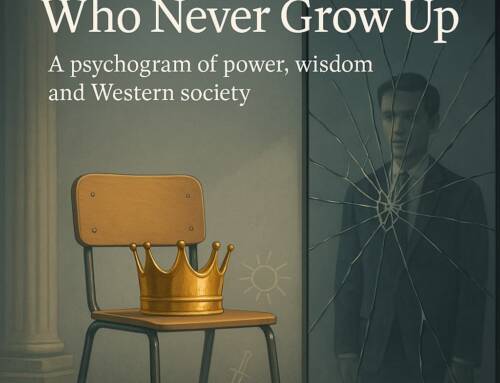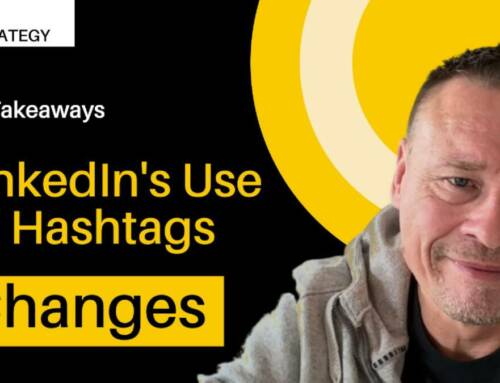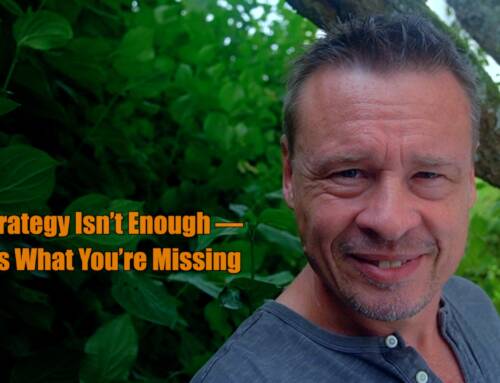Most development projects don’t define what people should actually do once their awareness is raised. Here’s why you should fix that!
In my consulting practice, I often get terms of reference that require me to support awareness raising activities. For a long time, I’ve been asking myself, which private company would spend money on this? Think about it. Development cooperation usually configures awareness raising goals without a call for a particular action.
Except for certain projects that explicitly focus on awareness and social or behavior change — because that’s what they’re actually set up to do — awareness raising goals are typically loosely defined. The project documentation won’t state what would actually constitute a raised awareness of the target group or what exactly the project would want people to do once they’ve reached a higher state of awareness. Why is that a problem?
Knowledge alone does not inevitably lead to action
As grandchildren of the enlightenment, most people educated in western institutions strongly believe in knowledge as the key driver of human development. They are guided by an intuitive belief that knowledge inevitably leads to informed action. Experts conceptualizing awareness raising goals for projects in development cooperation often enough seem to be under this impression, too.
The problem with the enlightened view is that it led to a concept of humans as rationally reasoning – especially in the form of homo oeconomicus in classic liberalism of the influential John Stuart Mill. It leaves out of the equation that humans have ulterior motives or are under pressure of conflicting goals or constraints exerted by others.
So the reality is, knowing that something is good for you and doing it are two completely different ball games. This means that any project activity that aims at informing only is bound to fail when it comes to reaching an assumed change to happen. Not always but often.
Anti-smoking campaigns of the 80s are a case in point
They focused on scaring people by raising awareness of the dangers of smoking and basically remained without effect. People knew about them but kept on smoking. The campaigns even had a call to action, Stop Smoking! But obviously that’s pretty broad and there was also a missing link somewhere between awareness and action.
When you want somebody to stop with something, you need to figure out what motivates them to do it in the first place. So Fenton, one of the largest public interest communications firms in the US had a look at why teenagers started to smoke. They found that it was rather the coolness of those who smoked that intrigued the youngsters than smoking itself. In their 2009 brochure “Now Hear This: The 9 Laws of Successful Advocacy Communication” — which is a brilliant introduction to all you need to know in terms of public interest communications — they summed it up like this:
“TheTruth.com, a campaign developed by Crispin, Porter and Bogusky, aimed to convince kids to stay away from tobacco. Faced with the fact that the coolness of smoking is a higher priority than health risks, CP&B focused less on teen mortality and more on the fact that teens were victims of manipulation and duplicity by a callous older generation. Teens, upon hearing that tobacco and advertising industries were colluding to cavalierly take teens’ money and abuse their bodies in return for billions in profit, got mad. This anger provided the key to a new brand: “The Truth.” The campaign effectively unveiled a new (and evil) oppressor and made the rejection of cigarettes a hip way to strike back.”
Awareness raising is based on a collaborative approach
Many projects work collaboratively to raise awareness. So as for strategic communications support to networks, I learned that working groups and network members easily lose sight of the overall strategic direction in terms of communications goals that they initially decided upon.
This is due to massive workloads and prevailing concepts of wanting to be hands-on in their approach, or it is caused by the simple fact that your typical development expert is a technical expert. Clearly, subject matter experts view it as their obligation to work in their field of expertise, where they know their ways and think they can make the largest contribution. Communication remains a secondary concern to them.
So the key challenge for a communications advisor in a network setting with mainly technical experts is to constantly steer the focus back to the original strategic leverage point, away from the pressure to constantly deliver something by putting the implementing tools to work.
From a vantage point, the most critical aspect of this is to ensure that workgroup members realize that communications activity in this day and age will only stand a chance for impact if it’s not viewed only as a one-way dissemination outlet with occasional loops to ask questions.
Communications strategy needs to influence the way everybody around the table does their job. Communications advisors should therefore sit at this table before products are discussed. Just being at the receiving end will not suffice.
The soft stuff is the hard stuff. In other words, the hardest part is the negotiation within the extended team in a development cooperation project, with supervisors and clients. The time of communicators only writing up press releases on what a project has done is over — or let me correct that — it would be over if all projects attempted to communicate effectively.
This includes setting up SMART goals, also for awareness raising. SMART goals are Specific, Measurable, Achievable, Realistic, and Timely. “They incorporate all of these criteria to help focus your efforts and increase the chances of achieving your goal for critical aspects for more effective communication.”
More critical aspects for more effective communication
Projects should reflect on questions like these:
- Who really is the target group? Can we get real names? What are their aims and aspirations? Can we talk to them to figure out what they would like to know of us — in order to not just assume?
- Do we know policymakers’ predicaments? How do we show them that we listen before we recommend to them where to spend their tight budgets? In other words, how do we let go of coming across as being driven entirely by our own intentions? Can we offer help to them that might be beside our own field but would help them?
- Are we stuck on relaying facts to inform or do we want to convince? Most projects want both — and that usually means that they are under the wrong impression that facts could be used to convince. Facts, to them, are factors that drive action, especially when technical experts make up the target group. This has been proven wrong over and over again. No matter what kind of people make up a target group, subtle factors that play into emotions, personal viewpoint angles, aspirations and the like are critical to trigger action.
This is actual also the reason why awareness raising is a problematic goal. Not only is it extremely difficult to measure, it means nothing if it doesn’t translate into concrete action. In others words, in terms of strategy you need to define what kind of actions you want to see and if people don’t take these actions, your awareness raising is practically useless.
For example, your projects shows that a particular policy would be advantageous and later on you survey the policy makers you targeted. Let’s say the result is completely positive. They all understood the benefits. However, later on you find they’re not recommending the policy changes to their ministers. This means awareness is reached but in the end you haven’t gained anything.
Methodologically speaking the goal of “increasing the political and public knowledge on the benefits of SLM measures” can be clear and have tangible indicators but reaching this goal doesn’t necessarily translate into reaching what you actually want.
In a case like this, we’d recommend you figure out what keeps the policy wonks from taking critical action. In other words, awareness raising in itself is more of a stepping stone than a goal. Strategic communications advice can and should help here by clarifying the relative usefulness of certain approaches and also be providing means to go back to the target groups to find out what it actually is that keeps them from taking the wanted action.
Photo by Katie Moum on Unsplash






Leave A Comment